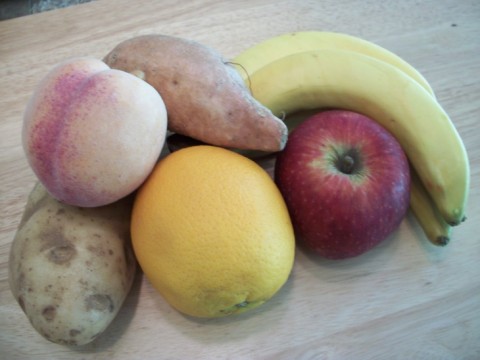DrCarney.com Blog
Ken’s Type-1 Diabetes Journey Part 6: Glycemic Index and Attention Span
As a Type-1 diabetic, the study of insulin and metabolism has been a subject of obsessive interest for the last 26 years. From personal experience I have found that maintaining normal blood sugar involves more than simply injecting insulin. It turns out that it is not entirely a simple matter of matching insulin dose to consumed calories.
Within the first year of my Type-1 diabetes journey, I discovered foods that result in the lowest required insulin doses and ones that result in the largest. Additionally, the foods that require the lowest insulin also provide the greatest vitality, highest level of energy, stamina, strength and agility. Later, I discovered there is actually a term for requiring elevated insulin – Insulin Resistance.
The puzzling thing, at the time, was that the foods that resulted in the lowest insulin resistance were the foods that my doctors, diabetic management classes and even the American Diabetes Association all said are bad. The foods that they said are good are the ones that result in the greatest insulin resistance! (Note: the reference, “my doctors”, in the previous sentence is previous to and not including my present doctor; Dr. Linda Carney MD.)
Due to the nature of insulin resistance and blood-glucose control, it is apparent that the confusion is due to a bad case of attention span. Insulin resistance has a very slow onset, duration and very, very slow recovery. Blood sugar rise and fall rates are traditionally measured in minutes. The standard postprandial measure is two hours. Insulin resistance, however, occur over days, weeks and months - completely outside the traditional attention window. Additionally, insulin resistance is not detectable with the popular blood sugar metric because the pancreas, even if weakened, counters with elevated insulin production. The best metric for insulin resistance is the comparison of blood glucose to blood insulin. Unfortunately, blood insulin is rarely tested or considered.
Insulin resistance is the impediment of insulin function; the uptake of glucose and burning it as fuel. This impediment causes glucose to back up in the bloodstream (in addition to making you feel tired). The pancreas senses the glucose congestion and pumps out more insulin to compensate. The process is slow and out of sync resulting in blood sugar spikes and subsequent dips. This causes the general medical community to assume carbohydrates cause the spikes, but the real culprit is insulin resistance. Therefore, they recommend avoiding carbohydrates or high glycemic foods. This is unfortunate because the real fix would be to clear the insulin resistance. Without insulin resistance, insulin performs its job of transporting glucose across the cell wall to be burned as fuel efficiently and without resistance. This means, energy production occurs on demand in real-time, in sync, eliminating blood sugar spikes and elevated insulin and undue burden on the pancreas. And - have I mentioned that energy on demand makes you feel fantastic?
Ok, so what did I discover that causes insulin resistance? No, it is not sugar, nor carbohydrates, and certainly not starch… It is fat. I discovered this by trial-and-error study, guided by my diabetic logs. It was found that any intake of fat would start a slow upward ramp of insulin dose requirement. The ramp-up starts about 12 to 24 hours after intake and peaks about the second day and held for another week with yet another week to slowly decline back to “normal”. And it doesn’t take much. Fat intake of just 20% in one day increases insulin requirement by over 30% and it is additive. Twenty percent fat just twice in one week pushes the duration out to a month and insulin increased over 50%. Most Americans have consumed such high fat for so long that it would take a very long time to clear the resistance. It took me almost a year. I believe the long lag time is why the medical community has not caught on to it as a cause. Recognition of insulin resistance is further concealed by the American standard for “low fat” being 30%!
It is commonly believed that “good” fats are essential. That is indeed true, however, fat is so prevalent in essentially everything edible that it is not something you ever need to seek. While avoiding fat with obsessive diligence, I have yet to find a too low limit. So far, the lowest I have been able to manage is 3.5%. I have found 10% to be a sharp knee in the curve. Under 10%, the lower the fat the sharper the increase in energy, strength and stamina and the better I feel. Even building muscle mass requires less exercise effort. From personal experience, holding fat intake below 10% long enough to clear the insulin resistance will unleash strength, energy, stamina, agility and overall feel-good that most Americans have never experienced in their lifetime.
It should be noted that there are actually two primary dietary influences on insulin resistance; fat (as already noted) and animal origin foods. Fat’s role is easier to understand. Insulin is blocked from the surface of the cell wall by a coating of serum fat. While the insulin resistance effect from animal products is very clear, the mechanism is not as clear. I suspect it may be that there is really no such thing as “lean” meat and / or it may be due to the toxic byproducts from the conversion process of animal proteins into amino acids. In any event, fat can only be minimized while animal products are easily eliminated.
DrCarney.com allows Member Blogs. Opinions in Member Blogs are views of the Member Blogger and not necessarily of Dr. Carney. Registered Users may request a FREE upgrade for blogging permission. Bloggers agree to support Dr. Carney's Starch-Smart-System.
When you subscribe to the blog, we will send you an e-mail when there are new updates on the site so you wouldn't miss them.




